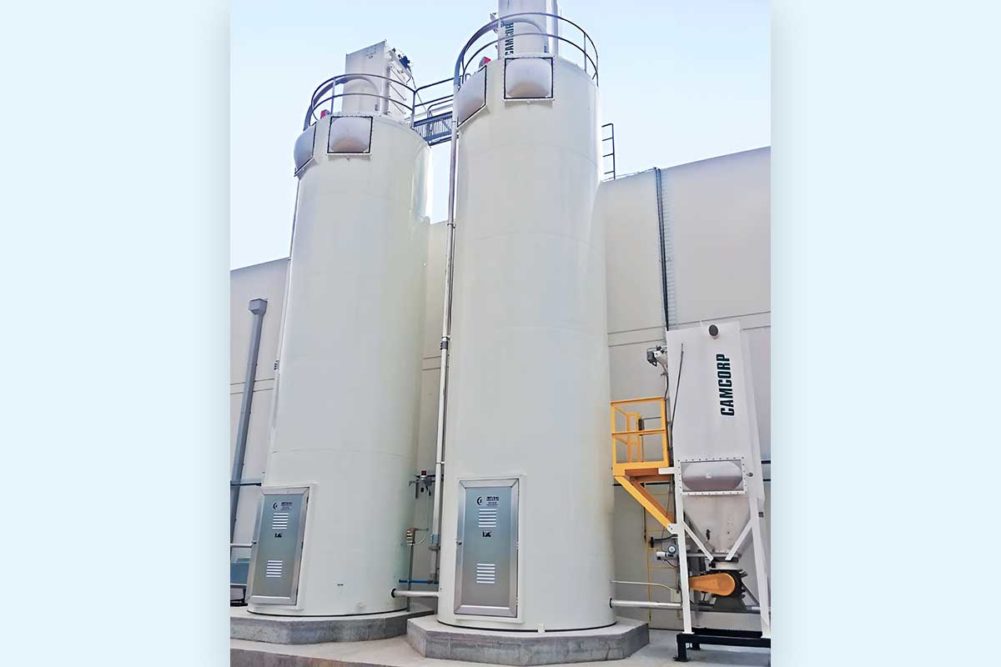When bakeries expand repeatedly, the distance between the newest production lines and the existing bulk ingredient handling system may require the use of smaller “day bins.”
As their namesake indicates, these containers are smaller than silos and often hold about a day’s worth of flour or some other main ingredient, and they provide some benefits, although at a cost.
“Day bins are typically added when we are conveying at high rates and over great distances,” noted James Toole, ingredient handling manager, Gemini Bakery Equipment/KB Systems. “This design will help shorten the actual conveyance cycle time to production and eliminate the need to either oversize equipment or add auxiliary devices to accommodate National Fire Protection Association (NFPA) codes.”
In addition to shortening conveying lengths, he added, day bins are helpful when the level of a single ingredient has increased, but not enough for a bulk system.
“Typically, a bulk system range would require a usage that is greater than 50,000 lbs per week,” Toole explained. “Day bins in this scenario would be labeled more of a minor ingredient that can be filled using a bag dump system.”
Overall, large bakeries also use day bins for temporary and intermittent storage, said Tom Leach, national sales manager, pneumatic conveying systems, Camcorp, a member of the Scheuch Group.
“The advantages can include dual outlets, allowing the withdrawal of ingredients and transferring them to different destinations at the same time,” he explained. “The disadvantage is the amount of floor space needed to add the day bin, filter, airlocks and blower assemblies.”
David Rodrigues, applications engineering manager, Zeppelin Systems USA, said day bins — also referred to as use bins — are effective when a rapidly growing bakery finds itself with too many production lines being fed by one or two silos. These bins also batch flour or other bulk ingredients into mixers more quickly.
“This technology is used to give bakeries more flexibility,” he observed. “Additionally, reducing the distance between the silo and the mixer will typically give bakeries more accuracy in the amount of an ingredient that they are dosing.”
Operationally, day bins can also supply a high-volume dedicated line or provide multiple lines with a consistent, controlled flow of ingredients.
An intermediate bin provides additional control and flexibility to a bulk ingredient system, said Ken Girts, director of sales and marketing, Fred D. Pfening Co. Scaling “loops” return the convey air and residual ingredient to the intermediate bin rather than the silo.
“This prevents potential of mixing ingredient from multiple bulk ingredient deliveries and allows for lot control. It’s often very easy to add a second or third discharge to an intermediate bin to support additional use points when bakery production is expanded,” Girts said.
“Operating directly from the silos can create problems in keeping pace with production batch cycle times when draw weights are high and/or there are multiple use points to serve,” he added.
In some cases, the decision to install a day bin could simplify a complex operation, said Blaine Johnston, process design manager, Zeppelin Systems USA.
Bakeries need to determine how many valves, pipes, sifters and other systems are involved with connecting multiple production lines to silos against the cost of installing a day bin, which may need its own filters, valves, piping and safety features.
The final decision, he added, is usually based on a number of factors, such as which system ultimately costs less to install and operate in the long run.
This article is an excerpt from the March 2024 issue of Baking & Snack. To read the entire feature on Ingredient Handling, click here.





